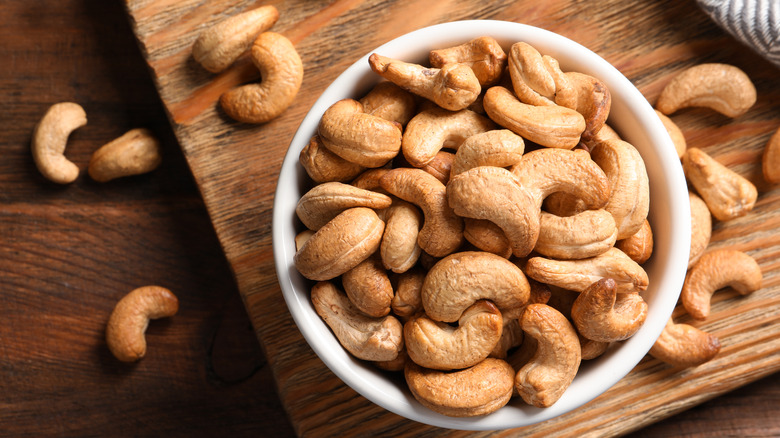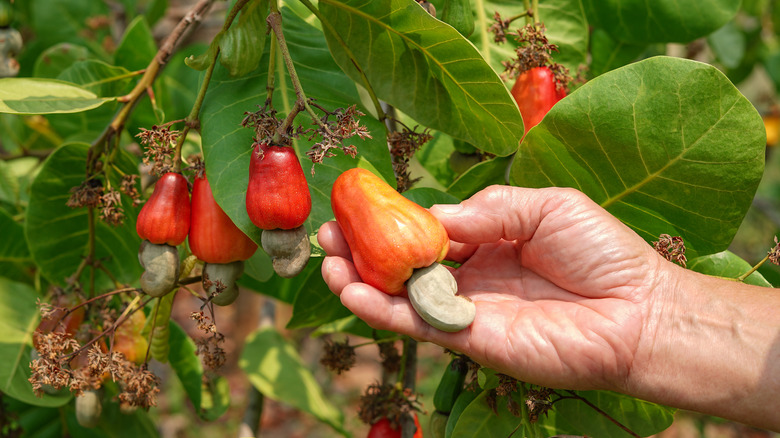Cashews Are Technically Not Nuts. Here's What They Actually Are
When you think of the most popular types of nuts, you might imagine acorns, chestnuts, and hazelnuts. Likely, almonds, macadamias, peanuts, pecans, pistachios, and walnuts also come to mind, but those aren't really true nuts. Cashews aren't either. Most of those are actually seeds, while peanuts are legumes... but what exactly are cashews?
One thing they are is snackable. Many people enjoy their crunchy mouthfeel and rich, buttery, creamy flavor, which can sometimes be underestimated as a bland taste. Plus, they're often salted, which helps accentuate their mild sweetness. They have lots of protein, as well, per Healthline, and they're often found in Asian dishes. Asia, especially in the southeast, grows quite a bit of cashews, according to University of Florida, as do parts of Africa, Australia, and the Americas — as long as the region is tropical enough. They can also be included to great success in chicken-and-veggie stir-fries, granola bars, and trail mixes.
Enough beating around the bush, though. Let's crack this nut. What is a cashew? Is it a seed? Is it a legume? Is it really a nut after all, and we've just been yanking your chain this whole time?
Cashews are drupe seeds
Almonds, macadamias, pecans, pistachios, and walnuts aren't alone; just like those five, cashews are seeds mistaken for nuts, according to Fine Dining Lovers. Cashew plants (Anacardium occidentale) — taking the form of shrubs and trees — originated in Brazil, per Encyclopedia Britannica. Nowadays, they grow primarily in their homeland and in India, where they were first imported around half a millennium ago. Thriving along low shorelines, this crop has many uses, providing producers with both resin and wood.
The plant's accessory fruits — which aren't true fruits, what's with all of these knockoffs? — are considered drupes: thin-skinned and fleshy with a central, stony seed. While the fleshy part of the cashew apple has its applications — drinks, jams, jellies — the real prize is, you guessed it, the cashew seed, which protrudes from the apple (via Healthline). Dry and roast that seed, and you've got yourself a cashew you can salt and snack on or cook with to your heart's content. It's also worth noting that cashew shells are toxic and inedible, so do yourself a favor and toss those aside next time you crack open this drupe seed.

